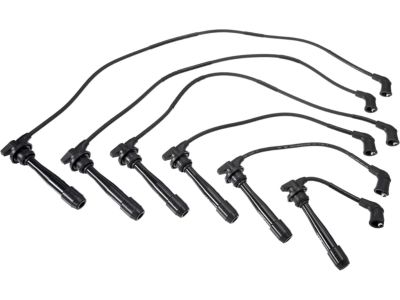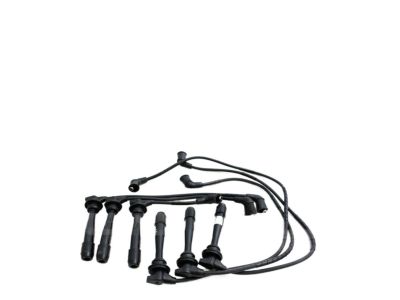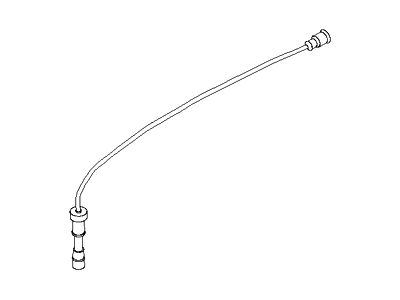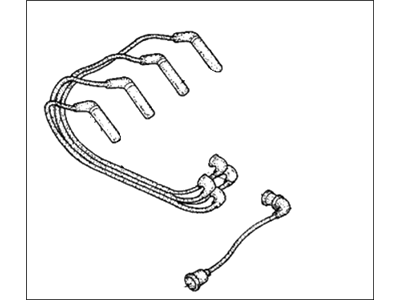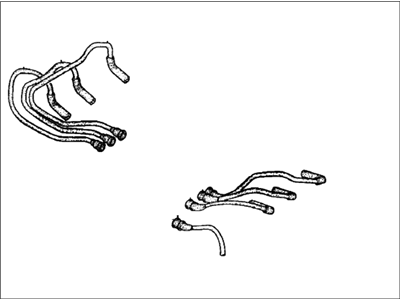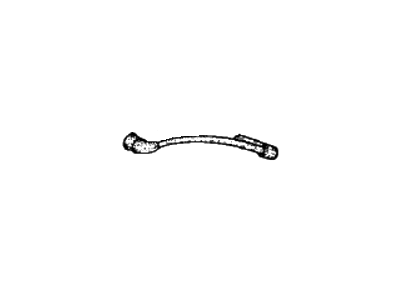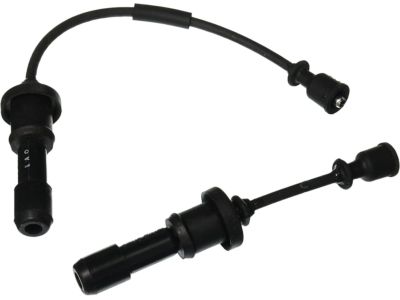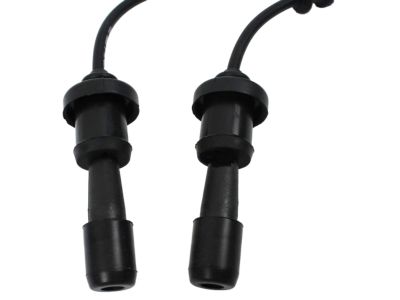×
- Hello
- Login or Register
- Quick Links
- Live Chat
- Track Order
- Parts Availability
- RMA
- Help Center
- Contact Us
- Shop for
- Hyundai Parts
- Hyundai Accessories


My Garage
My Account
Cart
Genuine Hyundai Sonata Spark Plug Wire
Spark Plug Ignition Wires- Select Vehicle by Model
- Select Vehicle by VIN
Select Vehicle by Model
orMake
Model
Year
Select Vehicle by VIN
For the most accurate results, select vehicle by your VIN (Vehicle Identification Number).
41 Spark Plug Wires found

Hyundai Sonata Cable Set-Spark Plug
Part Number: 27501-37A00$128.00 MSRP: $179.84You Save: $51.84 (29%)Ships in 1-3 Business DaysHyundai Sonata Cable Assembly-Spark Plug NO.1
Part Number: 27420-37101$21.33 MSRP: $27.56You Save: $6.23 (23%)Ships in 1-3 Business DaysHyundai Sonata Cable Set-Spark Plug
Part Number: 27501-32520$59.12 MSRP: $83.06You Save: $23.94 (29%)Ships in 1-3 Business DaysHyundai Sonata Cable Set-Spark Plug
Part Number: 27501-33A00$59.12 MSRP: $83.06You Save: $23.94 (29%)Ships in 1-3 Business DaysHyundai Sonata Cable Set-Spark Plug
Part Number: 27501-35A00$59.12 MSRP: $83.06You Save: $23.94 (29%)Ships in 1-3 Business DaysHyundai Sonata Cable Set-Spark Plug
Part Number: 27501-35A10$59.12 MSRP: $83.06You Save: $23.94 (29%)Ships in 1-3 Business DaysHyundai Sonata Cable Set-Spark Plug
Part Number: 27501-35B00$59.12 MSRP: $83.06You Save: $23.94 (29%)Ships in 1-3 Business DaysHyundai Sonata Cable Assembly-Spark Plug No.2
Part Number: 27430-35000$9.92 MSRP: $12.82You Save: $2.90 (23%)Ships in 1-3 Business DaysHyundai Sonata Cable Assembly-Spark Plug No.2
Part Number: 27430-35010$9.92 MSRP: $12.82You Save: $2.90 (23%)Ships in 1-3 Business DaysHyundai Sonata Cable Assembly-Spark Plug No.3
Part Number: 27440-35000$10.22 MSRP: $13.21You Save: $2.99 (23%)Ships in 1-3 Business DaysHyundai Sonata Cable Assembly-Spark Plug No.3
Part Number: 27440-35010$10.22 MSRP: $13.21You Save: $2.99 (23%)Ships in 1-3 Business DaysHyundai Sonata Cable Assembly-Spark Plug No.4
Part Number: 27450-35000$10.30 MSRP: $13.31You Save: $3.01 (23%)Ships in 1-3 Business DaysHyundai Sonata Cable Assembly-Spark Plug No.4
Part Number: 27450-35010$10.30 MSRP: $13.31You Save: $3.01 (23%)Ships in 1-3 Business DaysHyundai Sonata Cable Assembly-Spark Plug No.6
Part Number: 27470-35000$10.62 MSRP: $13.73You Save: $3.11 (23%)Ships in 1-3 Business DaysHyundai Sonata Cable Assembly-Spark Plug No.6
Part Number: 27470-35010$10.62 MSRP: $13.73You Save: $3.11 (23%)Ships in 1-3 Business DaysHyundai Sonata Cable Assembly-Spark Plug No.5
Part Number: 27460-35000$10.66 MSRP: $13.77You Save: $3.11 (23%)Ships in 1-3 Business DaysHyundai Sonata Cable Assembly-Spark Plug No.5
Part Number: 27460-35010$10.66 MSRP: $13.77You Save: $3.11 (23%)Ships in 1-3 Business DaysHyundai Sonata Cable Assembly-Spark Plug NO.1
Part Number: 27420-35000$10.67 MSRP: $13.79You Save: $3.12 (23%)Ships in 1-3 Business DaysHyundai Sonata Cable Assembly-Spark Plug NO.1
Part Number: 27420-35010$10.67 MSRP: $13.79You Save: $3.12 (23%)Ships in 1-3 Business Days
| Page 1 of 3 |Next >
1-20 of 41 Results
Hyundai Sonata Spark Plug Wire
If you are looking for affordable high-quality OEM Hyundai Sonata Spark Plug Wire, then you have come to the prime place. Our website provides a large amount of genuine Hyundai Sonata Spark Plug Wire at unbeatable prices. All our parts come backed with the manufacturer's warranty.
Hyundai Sonata Spark Plug Wire Parts Questions & Experts Answers
- Q: How to inspect and replace spark plug wires on Hyundai Sonata?A:Ignition coils on top of plugs are used by some models instead of Spark Plug wires. If you want to make sure that the spark plug wires are alright, this is important when installing new ones. With sufficient aeration and in dimly lit garage, visually inspect the wires while the engine is still running. Be careful with moving parts of the engine and look out for arcing or sparks where there is physical damage. In case there is any arcing, you must get new wires and after it has cooled down you should check ignition coil packs too. Inspect each spark plug wire individually so that you don't mix up the order; mark them accordingly. If numbers are not clear enough, take a piece of tape and write the right number on it then put it around the wire. By twisting and pulling the rubber boot, unplug it from spark plug avoiding to pull on wire itself. Disengage light corrosion using a wire brush but if corrosion is severe replace wires themselves. Tightly push both boot and wire onto the spark plug fitting snugly; crimping inside metal connector with pliers if necessary. Check along all parts for dirt especially at burns, cracks or other damages and clean entire length of wire with cloth to remove grease etcetera. Do not bend sharply or break conductor in between.Disengage from rubber boot on ignition coil pack and check for corrosion tight fit to reconnect again.Inspect rest of spark plug wires ensure they are secure fastened at coil pack and spark plus.If your engine requires new spark plug wires purchase an appropriate set for your model one by one replacing them to prevent firing orders mixing up.Wipe off any moisture around coil pack (s) or spark plug wires (if any) using a moist cloth then dry properly.Turn over crack check that you do not see carbon tracking as well.Armored with these basic facts about changing your car's oil, go ahead to perform it without fear or doubt.
Related Hyundai Sonata Parts
Browse by Year
2005 Spark Plug Wire 2004 Spark Plug Wire 2003 Spark Plug Wire 2002 Spark Plug Wire 2001 Spark Plug Wire 2000 Spark Plug Wire 1999 Spark Plug Wire 1998 Spark Plug Wire 1997 Spark Plug Wire 1996 Spark Plug Wire 1995 Spark Plug Wire 1994 Spark Plug Wire 1993 Spark Plug Wire 1992 Spark Plug Wire 1991 Spark Plug Wire 1990 Spark Plug Wire 1989 Spark Plug Wire 1988 Spark Plug Wire
